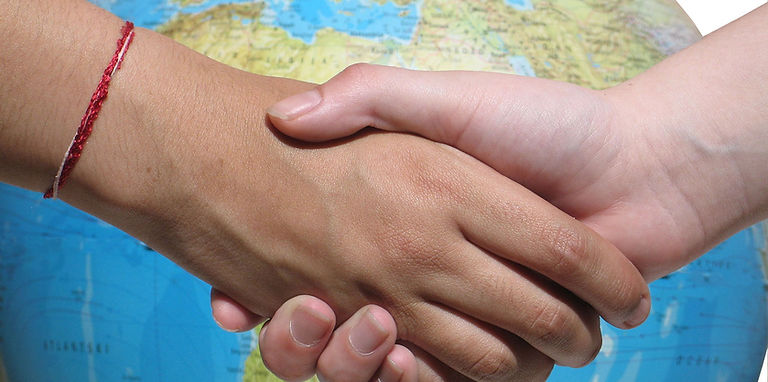Global Food Project
Donations to GYFP, a 501(c)(3) public charity, are tax deductible. EIN 47-4216498

One ninth of world's population is hungry. That's about 800 million people!
Over one third of the world's food is discarded or lost between the farm and the fork!
So, the world has more than enough food for everybody already!
The math solution is simple:
Rescue one third of the wasted food and redirect it to feeding and disaster relief organizations. They would then have enough food to eliminate hunger worldwide.
The practical solution is complicated, but we believe it can and should be done.
The Global Food Project's mission is to share world-class food banking and logistics technology, know-how and best practices worldwide, so feeding and disaster relief charities can feed the world's hungry people.
Where food banks exist, food is being saved from becoming landfill and is provided to those who can get it to the hungry.
Where food banks do not exist, charities expend much of their effort soliciting donations to buy food, which negatively impacts what they are able to do for the needy people they serve.
What are the reasons food banks aren't everywhere?
-
People aren't aware of food banking or what it can do.
-
Charities are focused on getting donations traditional ways, rather than sourcing food that would be discarded.
-
People don't know enough about food banks to establish one.
-
Laws discourage the food industry from donating food.
The Global Food Project (GFP) can easily address all of these four roadblocks to getting food banking started in a region.
The GFP can also help:
-
Extend existing food banking systems
-
Expand the reach and capabilities of existing feeding programs
-
Identify more loss and waste in the food supply chain that could be “harvested”
-
Work with governments to adopt policies and laws that encourage food donation
-
Develop logistical solutions to deliver more resources to feeding programs, and
-
Match volunteers to food banking opportunities, enabling them to improve the lives of countless others.
The GFP supplies the local food bank stakeholders with the additional expertise, coordination, and resources needed for them to successfully implement food banking to meet the needs of their hungry population.
How did the Global Food Project get started?
The U.S. Department of State funds scholarships for students aged 15-17 from countries with which the U.S. would like to improve relations, allowing these students to spend an academic year or semester living with an American family and going to an American high school.
These students must volunteer in their American host communities and are encouraged to continue doing community service after they return to their home countries. The U.S. has a thriving food banking network of nearly 200 food banks that use volunteers, so many of these hosted students get introduced to food banking while they are in the U.S.
Alumni of cultural exchange programs often so embrace the idea of volunteerism,
they are eager to find meaningful ways to continue volunteering upon their return to their home communities. The challenge for Alumni often has been “What can I do by myself back in my home country?”
When Wendi Taylor, the founder of the Global Food Project, asked 43 Malaysian exchange students in the U.S. if they would help assess the need for food banking in Malaysia once they returned home, she discovered that exchange student Alumni make excellent volunteers. The GFP is now making it possible for many exchange program Alumni and other compassionate people to volunteer in ways that will positively impact the lives of many.
